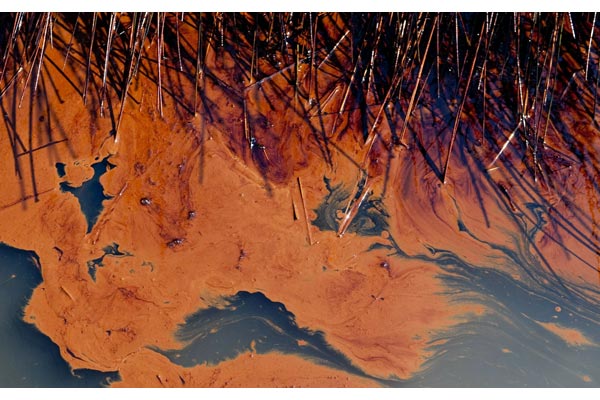
Samantha Joye, a marine sciences professor at the University of Georgia at Athens, said it's good news that the microbes are eating the methane. However, the microbes also use oxygen in the water, and Joye said the repercussions of the resulting oxygen depletion aren't yet known.
Joye said she hadn't completed her analysis yet, but that the data so far show that the microbes are much more abundant in the plume than they are in the water layers above and below it.
In lab experiments, the number of microbes nearly doubled in a 24-hour period.
"That's really, really surprising," Joye said. "Clearly the microbial community is responding rapidly and rigorously to the input of oil and gas."
In May, Joye lead a scientific mission on the research vessel Pelican that found early evidence of deepwater oil plumes. The National Oceanic and Atmospheric Administration immediately reacted with skepticism. Since then, however, there's been other evidence of subsurface oil. Joye has written a blog and holds weekly news conferences to make her subsequent research findings public.
The microbes consume oil and gas in the Gulf of Mexico that flows from some 1,000 natural seeps. Joye wrote in testimony to Congress last month that under normal conditions, natural seeps produce about 95 per cent of the offshore oil found in the water.
The BP blowout vastly exceeds that amount. The natural leakage is about 1,000 to 2,000 barrels a day throughout the entire Gulf. The official estimate of the flow from the broken BP well is as much as 60,000 barrels a day, gushing from one spot.
The cleanup of BP's oil in deep water is largely up to microbes because there's no way for humans to remove the dispersed oil and gas.
It's not known how long it will take microbes to process the oil and gas in the water after the flow stops, which could happen this week if BP succeeds with its new cap.
The natural gas component of BP's blowout is mainly methane. Joye said the microbes her team collected in water samples appear to be methane-eating bacteria. They took the samples from a deep-water plume of dispersed oil and gas about two miles from the wellhead.
More experiments will also be needed to determine whether other microbes are also responding in similar ways. The presence of oil stimulates the growth of oil-eating microbes as well, Joye said. Scientists also want to know how long the microbe populations can grow before they run out of nutrients.
They're also looking to see if the microbes will draw down oxygen to levels that would make the waters unsuitable for life. The Gulf of Mexico already has dead zones created by nutrients from fertilizer carried from the Midwest by the Mississippi River .
Scientists working for the NOAA who were tracking the spread of dispersants in the water found that oxygen wasn't depleted close to the wellhead, but that's because the "plume is very young" there and the microbes there hadn't had time to use up the oxygen yet, Joye said.
She said her team detected oxygen depletion in the deepwater plume about five to six miles from the wellhead.
Joye said she also was curious about the chemical dispersant BP has used to break up the oil and prevent slicks from reaching shore.
The dispersants are a complex mix of chemical compounds. Some of them can break down into other compounds that may be more or less toxic than the original ones, Joye said.
"We really have to worry about that as much as we worry about the oil and gas, because that's another feature of the spill that's going to take some unknown amount of time to be removed from the system."



Reader Comments
to our Newsletter